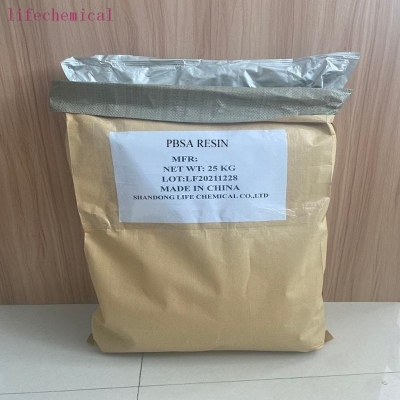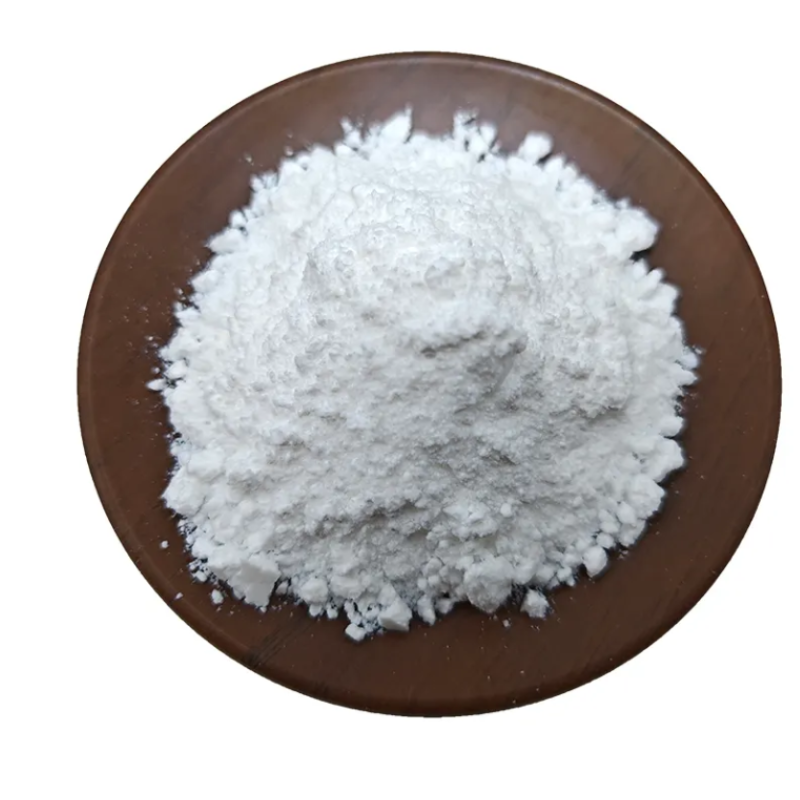-
Categories
-
Pharmaceutical Intermediates
-
Active Pharmaceutical Ingredients
-
Food Additives
- Industrial Coatings
- Agrochemicals
- Dyes and Pigments
- Surfactant
- Flavors and Fragrances
- Chemical Reagents
- Catalyst and Auxiliary
- Natural Products
- Inorganic Chemistry
-
Organic Chemistry
-
Biochemical Engineering
- Analytical Chemistry
-
Cosmetic Ingredient
- Water Treatment Chemical
-
Pharmaceutical Intermediates
Promotion
ECHEMI Mall
Wholesale
Weekly Price
Exhibition
News
-
Trade Service
On August 28, the Titanium Dioxide Sub-center of the National Chemical Industry Productivity Promotion Center invited industry experts to review the mechanical vapor recompression (MVR) concentration device operated by Ningbo Xinfu Titanium Dioxide Co.
, Ltd.
's titanium liquid concentration station
.
The review experts agreed that the application of this technology to the concentration of liquid titanium in the sulfuric acid titanium dioxide production process is the first in China, and the technical level has reached the international lead
.
Titanium concentrates MVR means Ningbo Fu is the first means of sulfuric acid in the titanium dioxide production line of continuous operation, the source Central Management Limited investment Investment Mao Feng Jiang Su Xinwei energy Engineering Limited embodiment
.
After 3 months of continuous production and operation, the process and technical parameters of the device all met the design requirements, and the operation was stable and reliable
.
According to calculations, the device consumes 37 kilograms of standard coal per ton of titanium dioxide in the titanium liquid concentration section, which saves about 120 kilograms of standard coal compared with single-effect concentration.
The energy consumption is 80% less than the traditional single-effect, and the energy-saving effect is obvious.
The economic benefits are significant
.
According to Bi Sheng, director of the Titanium Dioxide Sub-center of the National Chemical Industry Productivity Promotion Center and leader of the project review expert group, in the production process of titanium dioxide by the sulfuric acid method, the titanium liquid obtained by the reaction of titanium ore and sulfuric acid after the process of sedimentation, filtration, After the separation of ferrous iron and other processes, the TiO2 in the system is relatively low
.
Due to the difference in the crystallization process and the separation process of ferrous iron, the concentration of TiO2 in the titanium solution system of each factory is slightly different
.
As a pigment-grade product, the titanium liquid cannot be directly hydrolyzed, and must be concentrated to obtain a product that meets the requirements
.
In the existing domestic sulfuric acid titanium dioxide production line, the concentration of titanium liquid is an operation unit that consumes relatively large energy
.
Before concentration, the lowest TiO2 of the titanium solution is 145gpL, and the higher can reach 175gpL; for hydrolysis (pigment-grade products), the minimum TiO2 required by different processes is 190gpL, and the higher is 240gpL.
Therefore, the production cost of almost every factory In the item, the steam consumption of the concentration process is relatively large
.
In the early application of single-effect thin-film evaporation, the process consumes more than 1.
2 tons of steam per ton of product; after the emergence of double-effect and multi-effect evaporation, an average of 0.
6~1 steam per ton of product is consumed in this process
.
According to Lu Dan, the chairman of Jiangsu Xinwei Energy Conservation Project, in China's sulfuric acid titanium dioxide production technology, there are three types of titanium liquid concentration processes, single-effect concentration, double-effect (or multi-effect) concentration, and heat pump concentration.
None of the above concentration processes are available.
All exceptions consume more steam and a lot of cooling water
.
MVR concentration technology does not use external steam when evaporating, and compresses the secondary steam for reuse; it also does not require process cooling water, only a very small amount of cooling water is required for equipment cooling
.
This process is a fundamental change to the traditional titanium liquid evaporation technology, and is a pioneering technological achievement in the technological progress of sulfuric acid titanium dioxide.
It can completely replace the existing concentration method that uses steam as the evaporation heat source
.
Lu Dan said that because the MVR evaporation technology is low-temperature concentration, it is of great help to stabilize the quality of titanium liquid.
It is an important measure for energy saving and consumption reduction in the sulfuric acid titanium dioxide industry, and it is worthy of promotion and application in the titanium dioxide industry
.
Mechanical vapor recompression (MVR) refers to the use of a mechanical compressor to compress the secondary vapor generated in the evaporation or distillation process with low temperature, low pressure and difficult to reuse, to increase the temperature and pressure of the secondary vapor, and Use it as a heat source to heat the material that needs to be evaporated, so as to achieve the purpose of recycling steam
.
The MVR evaporation technology was proposed by foreign scholars in 1834.
In 1917, the Swiss Sulzer-Escher Wyss company initially manufactured a simple MVR system, which was implemented in 1925 and was designed and installed by an Austrian company
.
China only introduced MVR equipment in 1989, and listed the MVR technology as energy-saving and environmentally-friendly equipment that the country strongly encourages and supports in 2007 and 2010, respectively
.
MVR technology can be widely used in petrochemicals, fine chemicals, food and medicine, biological fermentation, and zero discharge of high-salt wastewater
.
, Ltd.
's titanium liquid concentration station
.
The review experts agreed that the application of this technology to the concentration of liquid titanium in the sulfuric acid titanium dioxide production process is the first in China, and the technical level has reached the international lead
.
Titanium concentrates MVR means Ningbo Fu is the first means of sulfuric acid in the titanium dioxide production line of continuous operation, the source Central Management Limited investment Investment Mao Feng Jiang Su Xinwei energy Engineering Limited embodiment
.
After 3 months of continuous production and operation, the process and technical parameters of the device all met the design requirements, and the operation was stable and reliable
.
According to calculations, the device consumes 37 kilograms of standard coal per ton of titanium dioxide in the titanium liquid concentration section, which saves about 120 kilograms of standard coal compared with single-effect concentration.
The energy consumption is 80% less than the traditional single-effect, and the energy-saving effect is obvious.
The economic benefits are significant
.
According to Bi Sheng, director of the Titanium Dioxide Sub-center of the National Chemical Industry Productivity Promotion Center and leader of the project review expert group, in the production process of titanium dioxide by the sulfuric acid method, the titanium liquid obtained by the reaction of titanium ore and sulfuric acid after the process of sedimentation, filtration, After the separation of ferrous iron and other processes, the TiO2 in the system is relatively low
.
Due to the difference in the crystallization process and the separation process of ferrous iron, the concentration of TiO2 in the titanium solution system of each factory is slightly different
.
As a pigment-grade product, the titanium liquid cannot be directly hydrolyzed, and must be concentrated to obtain a product that meets the requirements
.
In the existing domestic sulfuric acid titanium dioxide production line, the concentration of titanium liquid is an operation unit that consumes relatively large energy
.
Before concentration, the lowest TiO2 of the titanium solution is 145gpL, and the higher can reach 175gpL; for hydrolysis (pigment-grade products), the minimum TiO2 required by different processes is 190gpL, and the higher is 240gpL.
Therefore, the production cost of almost every factory In the item, the steam consumption of the concentration process is relatively large
.
In the early application of single-effect thin-film evaporation, the process consumes more than 1.
2 tons of steam per ton of product; after the emergence of double-effect and multi-effect evaporation, an average of 0.
6~1 steam per ton of product is consumed in this process
.
According to Lu Dan, the chairman of Jiangsu Xinwei Energy Conservation Project, in China's sulfuric acid titanium dioxide production technology, there are three types of titanium liquid concentration processes, single-effect concentration, double-effect (or multi-effect) concentration, and heat pump concentration.
None of the above concentration processes are available.
All exceptions consume more steam and a lot of cooling water
.
MVR concentration technology does not use external steam when evaporating, and compresses the secondary steam for reuse; it also does not require process cooling water, only a very small amount of cooling water is required for equipment cooling
.
This process is a fundamental change to the traditional titanium liquid evaporation technology, and is a pioneering technological achievement in the technological progress of sulfuric acid titanium dioxide.
It can completely replace the existing concentration method that uses steam as the evaporation heat source
.
Lu Dan said that because the MVR evaporation technology is low-temperature concentration, it is of great help to stabilize the quality of titanium liquid.
It is an important measure for energy saving and consumption reduction in the sulfuric acid titanium dioxide industry, and it is worthy of promotion and application in the titanium dioxide industry
.
Mechanical vapor recompression (MVR) refers to the use of a mechanical compressor to compress the secondary vapor generated in the evaporation or distillation process with low temperature, low pressure and difficult to reuse, to increase the temperature and pressure of the secondary vapor, and Use it as a heat source to heat the material that needs to be evaporated, so as to achieve the purpose of recycling steam
.
The MVR evaporation technology was proposed by foreign scholars in 1834.
In 1917, the Swiss Sulzer-Escher Wyss company initially manufactured a simple MVR system, which was implemented in 1925 and was designed and installed by an Austrian company
.
China only introduced MVR equipment in 1989, and listed the MVR technology as energy-saving and environmentally-friendly equipment that the country strongly encourages and supports in 2007 and 2010, respectively
.
MVR technology can be widely used in petrochemicals, fine chemicals, food and medicine, biological fermentation, and zero discharge of high-salt wastewater
.







